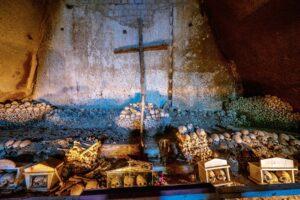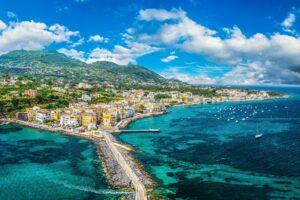Fodor's Expert Review Palazzo Reale
A leading Naples showpiece created as an expression of Bourbon power and values, the Palazzo Reale dates from 1600. Renovated and redecorated by successive rulers and once lorded over by a dim-witted king who liked to shoot his hunting guns at the birds in his tapestries, it is filled with salons designed in the most lavish 18th-century Neapolitan style. The Spanish viceroys originally commissioned the palace, ordering the Swiss architect Domenico Fontana to build a suitable new residence for King Philip III, should he ever visit Naples. He died in 1621 before ever doing so. The palace saw its greatest moment of splendor in the 18th century, when Charles III of Bourbon became the first permanent resident. The flamboyant Naples-born architect Luigi Vanvitelli redesigned the facade, and Ferdinando Fuga, under Ferdinand IV, created the Royal Apartments, sumptuously furnished and full of precious paintings, tapestries, porcelains, and other objets d'art.
To access these 30 rooms,... READ MORE
A leading Naples showpiece created as an expression of Bourbon power and values, the Palazzo Reale dates from 1600. Renovated and redecorated by successive rulers and once lorded over by a dim-witted king who liked to shoot his hunting guns at the birds in his tapestries, it is filled with salons designed in the most lavish 18th-century Neapolitan style. The Spanish viceroys originally commissioned the palace, ordering the Swiss architect Domenico Fontana to build a suitable new residence for King Philip III, should he ever visit Naples. He died in 1621 before ever doing so. The palace saw its greatest moment of splendor in the 18th century, when Charles III of Bourbon became the first permanent resident. The flamboyant Naples-born architect Luigi Vanvitelli redesigned the facade, and Ferdinando Fuga, under Ferdinand IV, created the Royal Apartments, sumptuously furnished and full of precious paintings, tapestries, porcelains, and other objets d'art.
To access these 30 rooms, climb the monumental Scalone d'Onore (Staircase). On the right is the Court Theater, built by Fuga for Charles III and his private opera company. Damaged during World War II, it was restored in the 1950s; note the resplendent royal box. Pass through three regal antechambers to Room VI, the Throne Room, the ponderous titular object dating to sometime after 1850.
In the Ambassadors’ Room, choice Gobelin tapestries grace the beige fabric walls and the ceiling honors Spanish military victories, painted by local artist Belisario Corenzio (1610–20). Room IX was bedroom to Charles's queen, Maria Cristina. The brilliantly gold private oratory has beautiful paintings by Francesco Liani (1760).
The Great Captain's Room has ceiling frescoes by Battistello Caracciolo (1610–16); all velvet, fire, and smoke, they reveal the influence of Caravaggio’s visit to the city. A wall-mounted, jolly series by Federico Zuccari depicts 12 proverbs.
Room XIII was Joachim Murat's writing room when he was king of Naples; brought with him from France, some of the furniture is courtesy of Adam Weisweiler, cabinetmaker to Marie Antoinette. The huge Room XXII, painted in green and gold with kitschy faux tapestries, is known as the Hercules Hall, because it once housed the Farnese Hercules, an epic sculpture of the mythological Greek hero. Pride of place now goes to the Sèvres porcelain.
The Palatine Chapel, also known as the Royal Chapel, redone by Gaetano Genovese in the 1830s, is gussied up with an excess of gold, although it has a stunning multicolor marble intarsia altar transported from a now-destroyed chapel in Capodimonte (Dionisio Lazzari, 1678). Also here is a Nativity scene with pieces sculpted by Giuseppe Sammartino and others. Another wing holds the Biblioteca Nazionale Vittorio Emanuele III. Starting out from Farnese bits and pieces, it was enriched with the papyri from Herculaneum found in 1752 and opened to the public in 1804. The sumptuous rooms can still be viewed, and there's a tasteful terrace that looks onto Castel Nuovo.
The newly opened Galleria del Tempo is a multimedia trip through the history of Naples, in the Bourbon stables.
READ LESS







